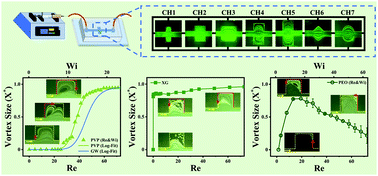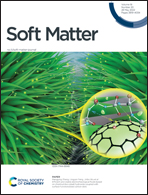Vortex evolution patterns for flow of dilute polymer solutions in confined microfluidic cavities
Abstract
Flow instability in confined cavities has attracted extensive interest due to its significance in many natural and engineering processes. It also has applications in microfluidic devices for biomedical applications including flow mixing, nanoparticle synthesis, and cell manipulation. The recirculating vortex that characterizes the flow instability is regulated by the fluid rheological properties, cavity geometrical characteristics, and flow conditions, but there is a lack of quantitative understanding of how the vortex evolves as these factors change. Herein, we experimentally study the flow of dilute polymer solutions in confined microfluidic cavities and focus on a quantitative characterization of the vortex evolution. Three typical patterns of vortex evolution are identified in the cavity flow of dilute polymer solutions over a wide range of flow conditions. The geometrical characteristics of the cavity are found to have little effect on the patterns of vortex evolution. The geometry-independent patterns of vortex evolution provide us an intuitive paradigm, from which the interaction and competition among inertial, elastic and shear-thinning effects in these cavity-induced flow instabilities are clarified. These results extend our understanding of the flow instability of complex fluids in confined cavities, and provide useful guidelines for the design of cavity-structured microfluidic devices and their applications.



 Please wait while we load your content...
Please wait while we load your content...